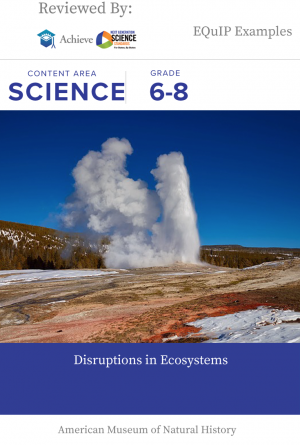
The unit was developed as part of a collaborative project funded by the National Science Foundation to develop and evaluate a model instructional unit and professional development program and conduct research on teacher learning. The project partners are the American Museum of Natural History (lead partner, also leading the professional development), The Lawrence Hall of Science's SEPUP Program (instructional materials lead), and the University of Connecticut (research). The unit has undergone two rounds of classroom field-testing and expert review. It is currently undergoing a third field-test during the 2017–2018 school year. Based on this field-test and feedback from the EQuIP review, the unit will be revised and resubmitted for a final review in 2018.
Score: 7
Science Discipline: Life Science
Length: Unit
Year Reviewed: 2017
This middle school unit was designed to support the middle school NGSS related to Ecosystems: Interactions, Energy, and Dynamics integrated with elements of related Earth science NGSS (Human Impact). The unit includes five chapters, each focused on a specific phenomenon related to ecosystem disruption, including questions around the reintroduction of wolves into Yellowstone and the invasion of zebra mussels in the Great Lakes and the Hudson River. © Regents of the University of California
 Reviews & Questions
Reviews & Questions
- - Any -
- Questions
- Reviews
- Log in or register to post comments